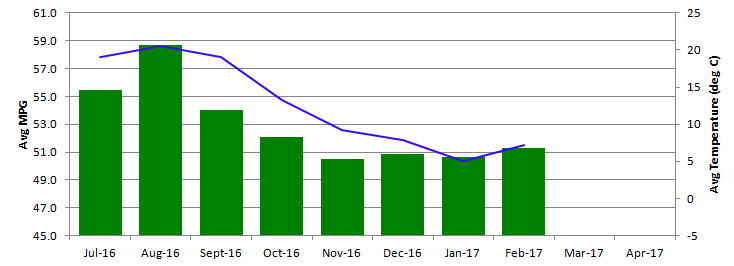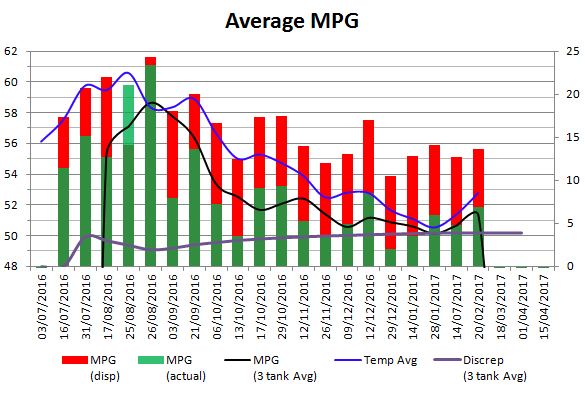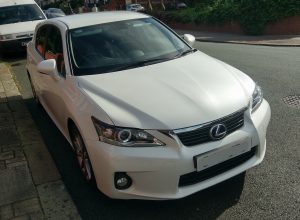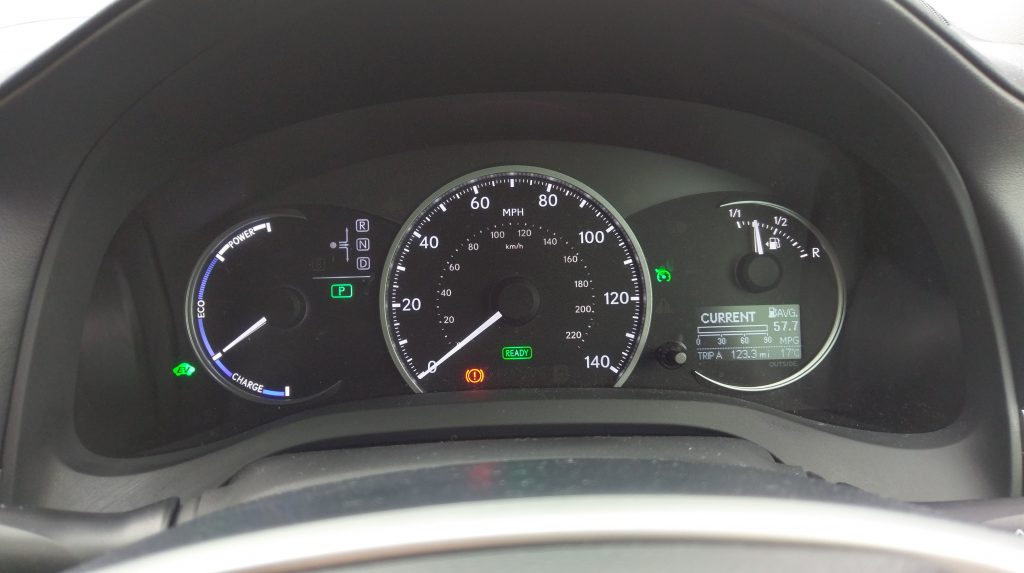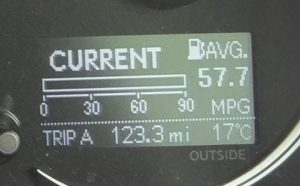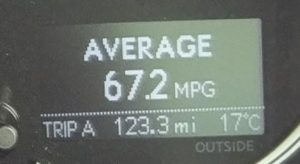Lexus CT200h – Temperature, MPG and BSFC

I thought since I’ve not posted for a while that I’d share some more data with you. For almost 3 years I’ve been logging every fill up at the pump to put together the graph you see above (among others).
So what is the graph showing? Simple – it’s a scatter chart between MPG from a tank of fuel versus the (roughly) average temperature during that time. (Note that the colour grading was added by me and only shows my personal acceptable ranges).
The MPG data comes directly from the mileage covered and the amount fueled, converted into miles per gallon. The temperature data is recorded at home every 60 seconds and stored in a database. I can pull the temperature for any time on any day over the last 3-4 years at home. This is the data I use for the average temperature. It’s only a rough guide, but it helps to show the pattern.
What we can see is that temperature has a very significant effect on the fuel economy of the engine and hybrid system. The warmer the ambient temperature, the more efficient they are, yielding a higher miles per gallon. Obviously this drops off the higher up the scale we go because the engine has its efficiency limits (and data up that end is limited so accuracy is lower).
You can see the relationship between temperature, MPG and the time of year on this graph:

My driving split is around 25% town and 75% motorway with typical journeys being around 15 miles. My typical motorway speed is between 60-70mph.
BSFC (Brake Specific Fuel Consumption)
Most people probably haven’t heard of this one. I’ll try to keep it as simple as I can. Here is the Wikipedia definition:
“Brake specific fuel consumption (BSFC) is a measure of the fuel efficiency of any prime mover that burns fuel and produces rotational, or shaft, power. It is typically used for comparing the efficiency of internal combustion engines with a shaft output.
…
Commonly BSFC is expressed in units of grams per kilowatt-hour (g/(kW·h)).”– Wikipedia
So basically what it means is how much useful power can be produced for the amount of fuel injected based on engine speed and engine load.
Below are BSFC charts for the 2nd and 3rd generation Toyota Prius. The CT200h is based on the 3rd generation, so we’ll be focusing on the right hand graph.
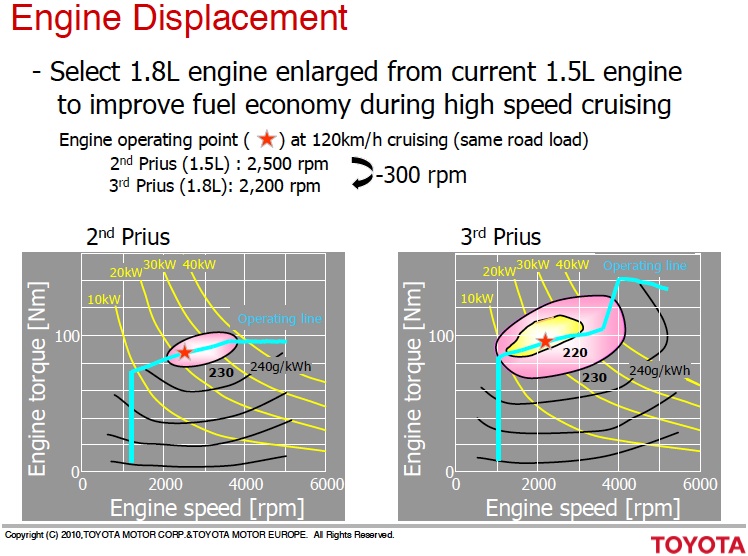
BSFC is something I didn’t realise existed until around a year ago when I was looking on various forums to understand how the engine remained efficient. The entire system is designed around the BSFC chart to ensure that when the vehicle is being used normally, say on the motorway at a typical cruising speed of say 75mph (120km/h), it would sit in the most efficient part of the BSFC chart, producing power at its most efficient point.
This doesn’t mean that it’s producing a lot of power, but it’s producing it as efficiently as possible. In this case, it’s only producing about 22kW of power and 95Nm of torque. This is enough to cruise on a flat road as efficiently as possible.
Now, an engine can operate wildly at both sides of this in both power and torque requirements, and that’s where things start to go horribly wrong. You can very quickly fall outside of this efficiency range. Too much or too little torque, and you leave the efficiency band. Too much or too little engine RPM, and the same thing happens. This is why the hybrid system is designed the way it is – it tries to keep the engine in the most efficient part of the BSFC chart as possible.
The hybrid synergy drive eCVT gearbox is best suited to this task because of the precise control it can have over the power delivery. If it needs to load up the engine to get it into the efficiency band it can do so by generating power through MG1 and then sending that power to the wheels or the battery. Of course this still has limitations, but it’s an improvement over a regular auto or manual gearbox.
Unfortunately the nature of how we drive – speeding up, slowing down, going slow, going fast – they all put it outside of this band far too frequently. It can only manage to keep inside the efficiency band under certain conditions.
Recently I discovered that Toyota and Lexus try to help you stay in the efficient part of the BSFC chart in the most simple way they can. The power meter on the dashboard… Obvious when you think about it!

There are 3 bands – Charge, Eco and Power. The most efficient part of the BSFC chart sits within the Eco area. If you can keep your use to this area you’ll stay as efficient as possible. However, you won’t have much power to get your vehicle up to speed or go up any sizable hill, so you will need to use the power band sometimes.
Generally the rule of thumb is to accelerate as gently as possible to stay within this BSFC band, and I found that this does work after lots of experimenting. You can combine this technique with pulse and glide, general coasting, driving a little slower, and more to maximise fuel efficiency.
These days I’ve become less and less focused on the fuel efficiency because I now know what the system can do. It can still achieve fuel economy far above a regular petrol engine – I have averaged 52mpg since beginning ownership, with peaks up to 61mpg and the lowest I saw from a tank was 47mpg.
Lets be honest, you’re never going to save huge amounts of money because you’ve opted for a hybrid as you’ll offset a lot of that in the purchase cost. However the more miles you drive the more you’ll save in fuel, and you’ll pump less harmful emissions into the environment too if that’s on your personal agenda. And if you want to go one step further on that agenda, buy a fully electric vehicle instead! 🙂

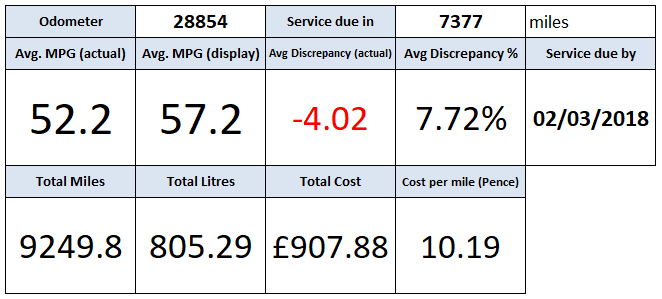
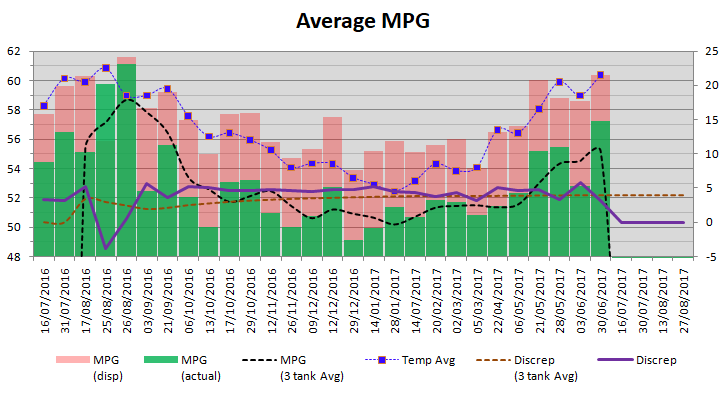
 2013 Lexus CT200h average fuel economy. Source: Fuelly.com
2013 Lexus CT200h average fuel economy. Source: Fuelly.com